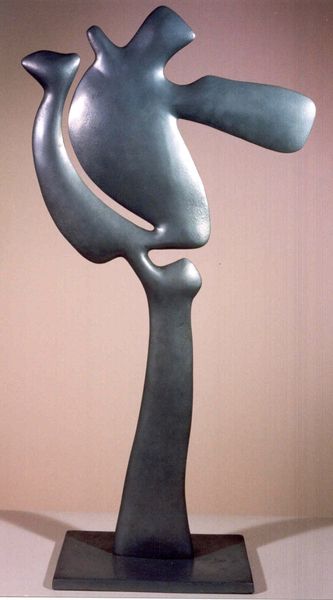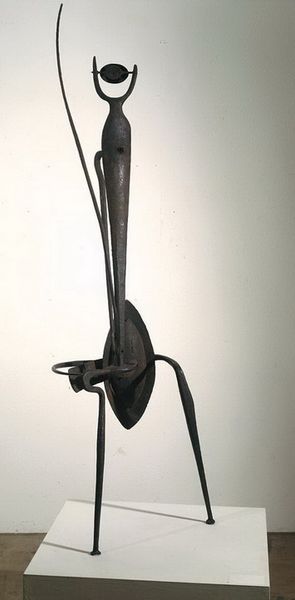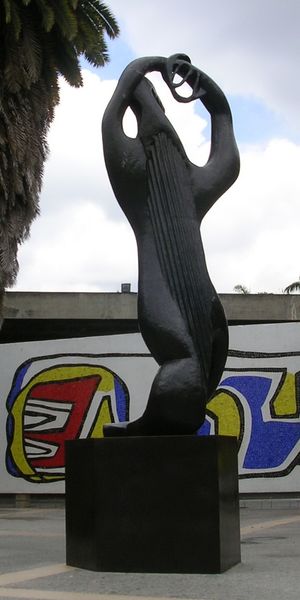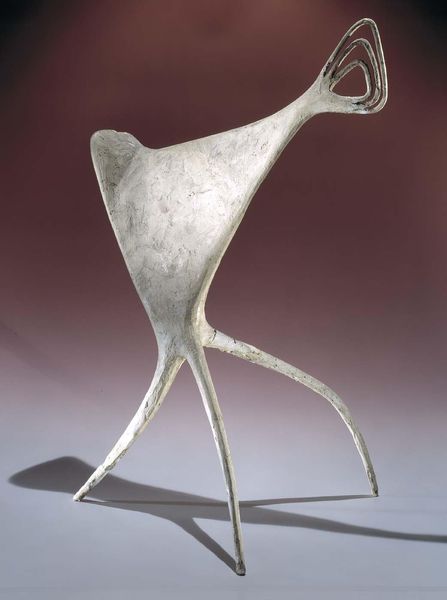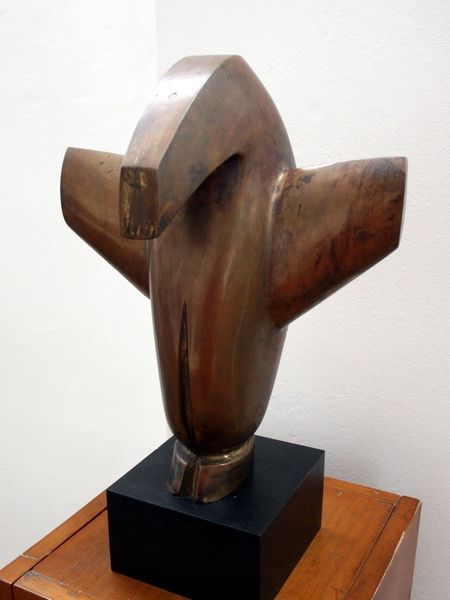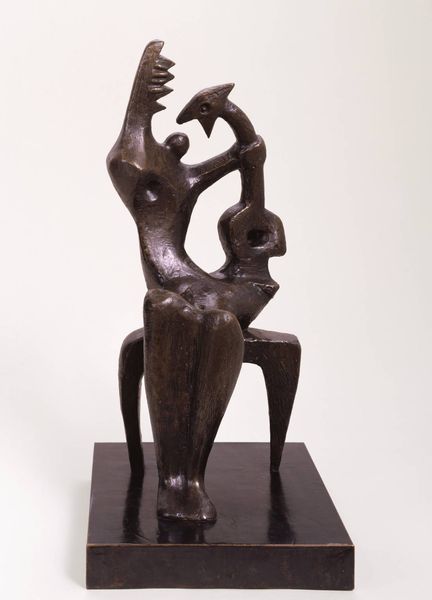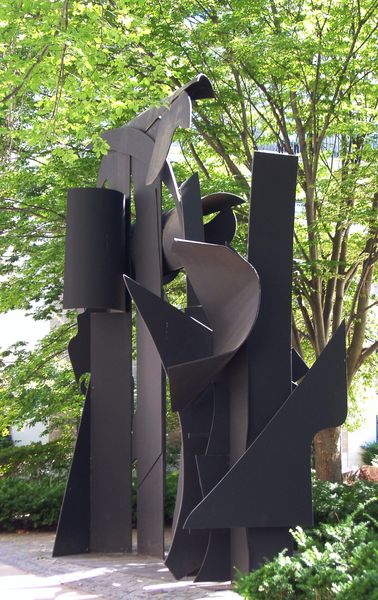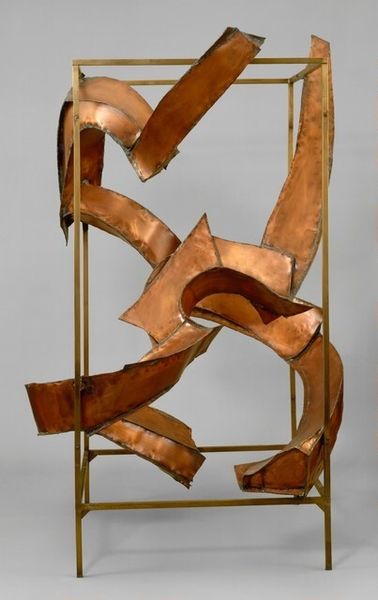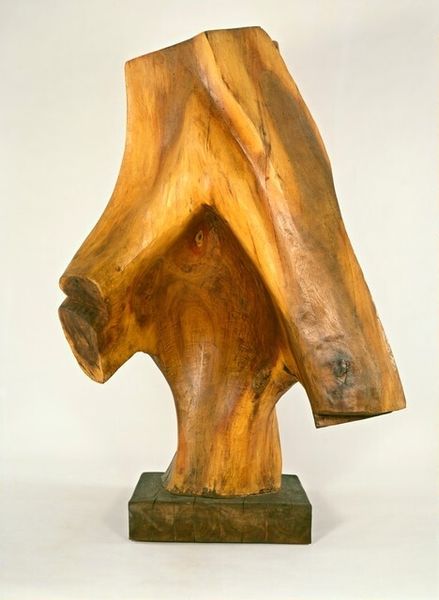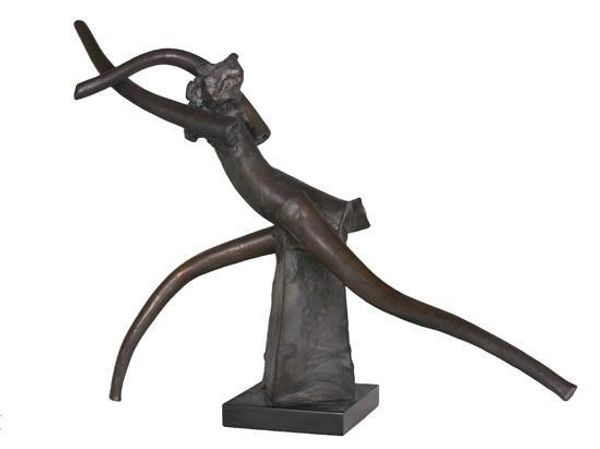
bronze, sculpture
#
abstract-expressionism
#
sculpture
#
industrial design
#
bronze
#
form
#
sculpture
#
geometric-abstraction
#
abstraction
#
modernism
Copyright: Etienne Hajdu,Fair Use
Editor: This is "Mademoiselle La Plume" by Etienne Hajdu, created in 1965 from bronze. I'm struck by the smooth, almost futuristic quality of it, contrasting with the historical process of bronze casting. What can you tell me about the artwork? Curator: Well, let's think about bronze in the 1960s. It's a traditional material, yes, but it’s being utilized in an era obsessed with industrialization and new technologies. Hajdu isn’t just using bronze; he's transforming it, making it speak to a machine-age aesthetic. Consider the process of creating this sculpture: the lost-wax casting method, the labor involved in polishing and finishing... What do those production choices communicate? Editor: It seems he's deliberately blurring the lines. The piece is handcrafted from a traditional material, but evokes mass-produced, modern forms. The title "Mademoiselle La Plume" – Miss Feather – hints at lightness, but the bronze feels heavy and industrial. Curator: Exactly! It is in tension. What social values are embodied in that tension? How might the consumption of a piece like this, which plays on notions of "high art" versus mass-produced items, reflect societal anxieties or aspirations? What sort of cultural statement does the choice of such contrasting materialities represent, in an age when plastics and new metals were challenging traditional sculptural materials? Editor: So, it’s less about the final form itself and more about how the chosen material and its manipulation reflect broader cultural anxieties around industry and art? I hadn't considered the tension between traditional artistic practices and the rise of consumer culture at that time. Curator: Precisely. Hajdu encourages us to examine the economic and cultural forces embedded within the artistic process itself. It’s not just bronze; it’s bronze employed to make a statement about value, labor, and societal change. Editor: I see it differently now. The choice of bronze almost becomes a commentary itself, about art's place in a rapidly changing, increasingly industrialized world. It is not just about the geometric abstraction, but the historical and socio-economical weight the material adds to the discussion. Thanks! Curator: My pleasure! Thinking about art this way helps reveal complex relationships that might otherwise go unnoticed.
Comments
No comments
Be the first to comment and join the conversation on the ultimate creative platform.
